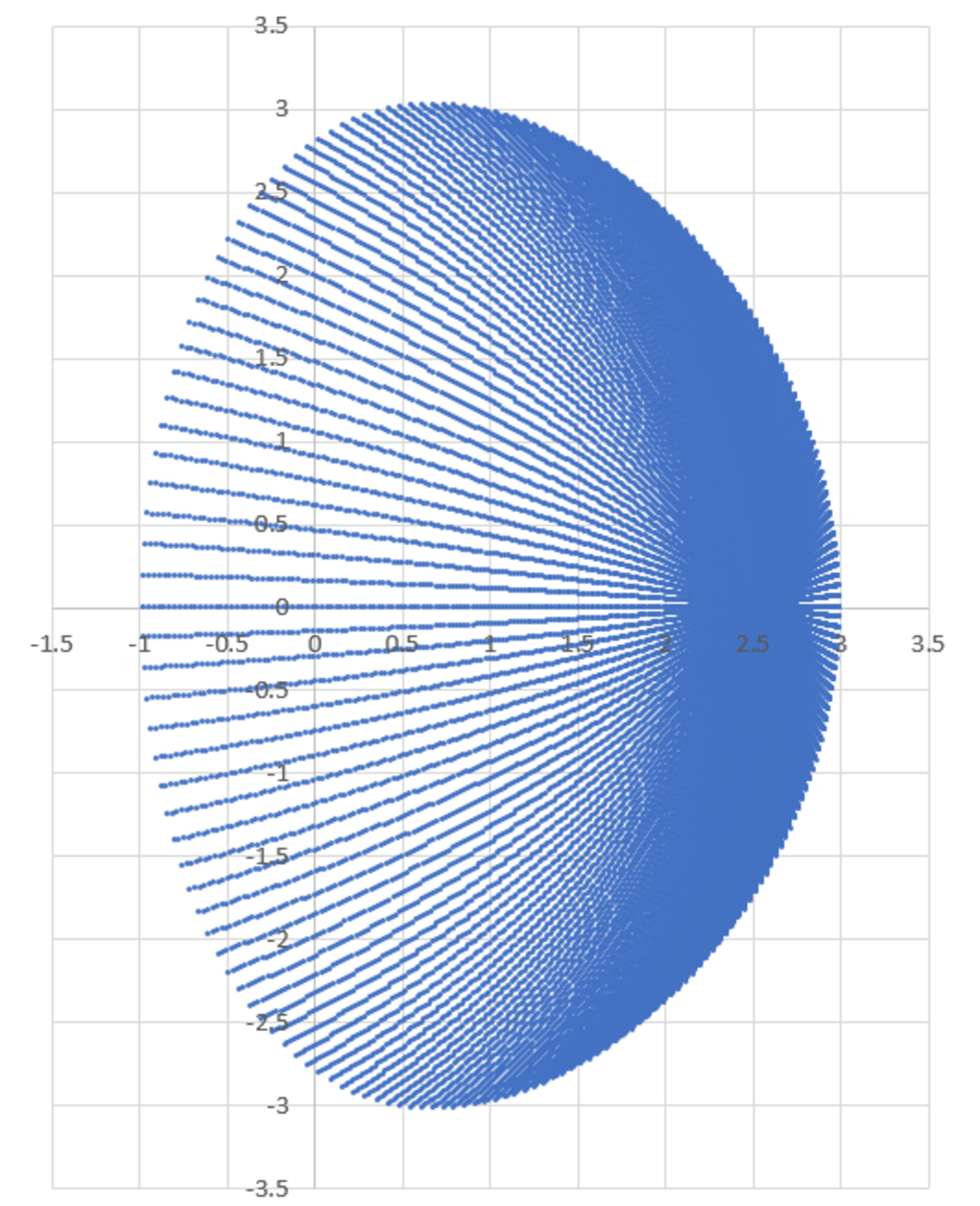Disintegrated Disk Debris
A circular disk of radius and area mass density is positioned in the plane with its center at the origin. A point on the disk has position , which varies with the polar coordinates.
The disk is then blasted into infinitesimal pieces, with each piece initially having speed . The initial velocity of each piece is directed along the line from to (see details). There is an ambient gravitational acceleration in the negative direction.
The disk fragments eventually land in the plane, where they remain fixed in place. Let be the moment of inertia of the original disk with respect to the axis, and let be the moment of inertia of the final debris field with respect to the axis.
What is ?
Details and Assumptions:
1)
2)
3)
4)
5)
6)
Neglect mutual gravitational interactions between disk fragments
The answer is 13.98.
This section requires Javascript.
You are seeing this because something didn't load right. We suggest you, (a) try
refreshing the page, (b) enabling javascript if it is disabled on your browser and,
finally, (c)
loading the
non-javascript version of this page
. We're sorry about the hassle.

General outline of the solution: Consider a mass element of mass d m = ρ r d r d θ . It has an initial position:
P d = r cos θ i ^ + r sin θ j ^
Let:
n = P d − P n ^ = ∣ P d − P ∣ P d − P
The initial velocity vector of this mass element is:
v o = v o x i ^ + y v o y j ^ + v o z k ^ = v o n ^
The acceleration vector of this elementary mass is:
a = − g k ^
Solving for the motion of the element mass yields:
x ( t ) = v o x t + r cos θ y ( t ) = v o y t + r sin θ z ( t ) = v o z t − 2 1 g t 2
When the mass strikes the XY plane again, it does so when z = 0 . This occurs at a time:
T = g 2 v o z
Using this, the x and y coordinates of landing can be found by replacing time T in x ( t ) and y ( t ) . Let the final coordinates after flight be X and Y . Using these exact results, the moment of inertia of this mass element about the Z-axis can be found as such:
d I = d m ( X 2 + Y 2 ) I = ∫ 0 1 ∫ 0 2 π ( X 2 + Y 2 ) ρ r d r d θ
Substituting all expressions and simplifying gives the exact integrand. One may attempt to get a closed-form solution (not checked), but I have integrated this expression numerically to obtain:
I o I ≈ 1 4